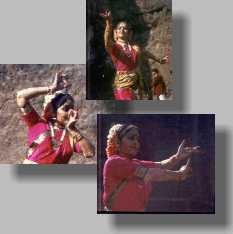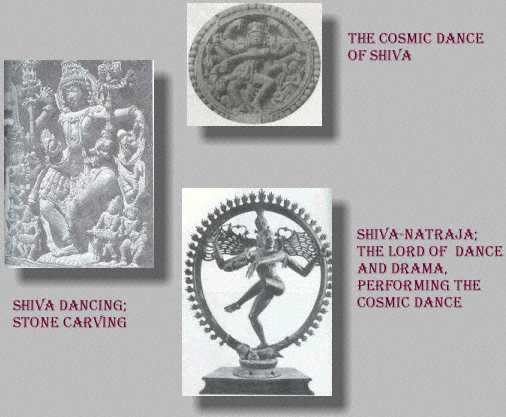|
According to a story in
Hindu mythology, in the forest lived sages who had spent
their lives studing the cosmos, seeking the supreme Truh.
They sought an answer to to the mystery of human
existance and human misery. But, as time passed they
became deluded with self-importance and their heads
swelled with pride. They claimed tohave renounced the
world, yet sought and practiced every form of sensual
indulgence. The God Shiva then, in order to teach them a lesson, arived in the form of a handsome young hermit. So enamooured were the saes and their wives by the youth, that they ran after him crying "Stay with us; we will give you whatever you want". To this, Shiva burst out with a contemmptuous laugh |
| that ridiculed hypocrisy and ignorance. Holding Shiva responsible for their own lack of restraint, the sages decided to destroy this temptation. With their magic powers they created a tiger, a serpant and a goblin and set them upon Shiva. Shiva skinned the tiger alive, wore the serpant round his neck, and laughing like a madman, jumped on the goblin's back and began dancing as if on stage. His performance stunned the sages; his arms whirled wildly, his flying locks crashed into the heavenly bodies, his steps split the mountains. As he danced, the sages realised that Shiva had flayed the tiger of their ambition, amed the serpant of their passion and crushed the goblin of their ego. His dance captured the rhythm of life, the cosmic cycle of generation, organisation and destruction; it encapsulated the essence of the cosmic truth. In his right hand Shiva held a rattle-drum that makes the final sound of death, and produces the primevial reverbeation of life. In his left hand, he held the fire that burns and destroys, yet illuminates and energises. Around him, distinct from him, revovled the great wheel of samsara flled with infinite cycles of births and rebirths. The sages watched this dance in awe. It inspired Bharata to write the Natyashastra, a treatise that forms the foundation of classical Indian dance. Shiva thus came to be known as Natraja, the lord of natya, dance and nataka, theatre. |
|
| A couple of miles off the coast of
Bombay, on a small island, are situated the Elephanta Caves. The caves are
dedicated to Shiva and are full of exquisite carvings
depicting him in various forms. On my last visit to the caves, our group was accompanied by an Indian Classical dancer. She quickly donned her traditional dress once we got there. We all looked forward to shooting a traditional dance with the mute cavings of the lord of dance looking on. Unfortunately, it was too dark in the caves to be able to shoot her against the backdrop of Shiva, and the light outside was a wee bit too harsh. Well, I got what I managed to get. Upon reviewing my work later, I felt that I should have zoomed in some more for some of the shots in this gallery. Maybe, a couple of tight shots of just her jewellery would have been nice too. Well, hindsight... All the shots in this gallery were taken on my EOS 5, employing spot-metering. Film used was Fujichrome Velvia RDP II 100. The film was underexposed 1/2 a stop for increased color saturation. |
 |
